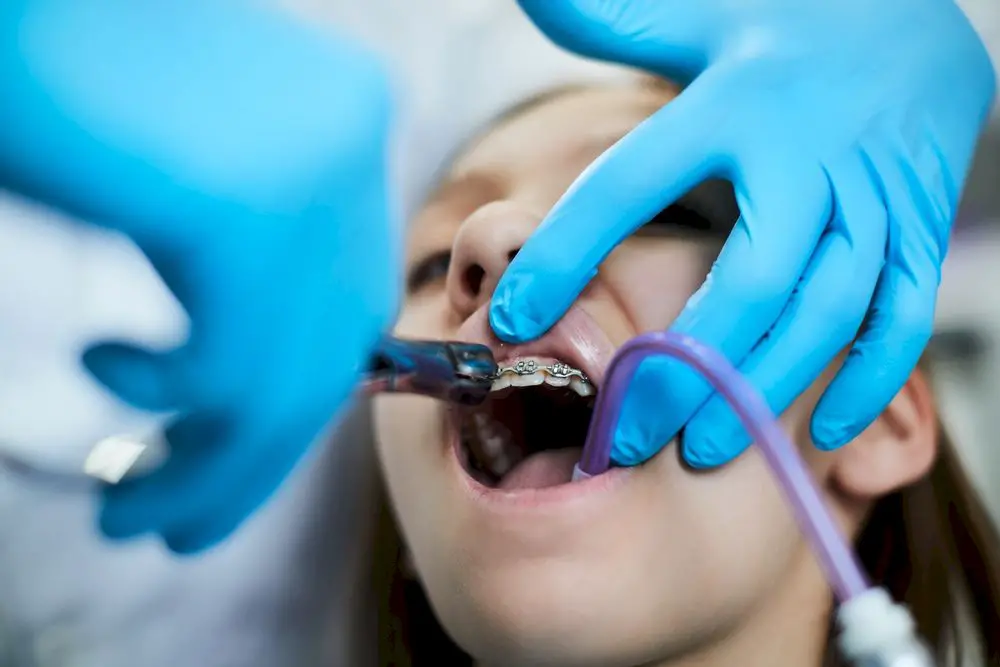Examine This Report about Gray Orthodontics
Wiki Article
6 Simple Techniques For Gray Orthodontics
Table of ContentsThe Ultimate Guide To Gray OrthodonticsGet This Report on Gray OrthodonticsThe Gray Orthodontics IdeasThe Only Guide to Gray OrthodonticsThe Gray Orthodontics StatementsThe 9-Second Trick For Gray OrthodonticsNot known Factual Statements About Gray Orthodontics
What is the difference between a dental practitioner and an orthodontist? All dental practitioners, consisting of orthodontists, treat the teeth, gum tissues, jaw and nerves.
An orthodontist is a dentist that has actually undergone training to specialize in the diagnosis, prevention and therapy of abnormalities in the jaw and teeth. They can likewise identify potential issues in teeth placement that might develop when conditions are left unattended.
3 Simple Techniques For Gray Orthodontics
This includes all the required education to come to be a general dental professional. According to the American Trainee Dental Organization (ASDA), it implies you will need to have either a Physician of Medication in Dentistry (DMD) or a Physician of Oral Surgery (DDS). Simply put, orthodontists need to complete oral college and afterwards obtain an orthodontics specialty education.These include apparatus such as braces, retainers and Invisalign. What does an orthodontist do, and what do they focus on? The general goal of an orthodontist is to boost a client's bite. Not everybody is birthed with straight teeth, and an orthodontist will certainly guarantee that clients obtain equally spaced straight teeth.
The Facts About Gray Orthodontics Revealed
When you have a healthy bite, you can speak, chew and eat effectively, therefore boosting your top quality of life. Other than the orthodontist, we frequently see assistants dealing with these dental professionals in their clinics. What is an orthodontist aide called? They're appropriately understood as orthodontic aides. They are specialized aides, and are educated to handle oral equipment and offer preventative oral medical care.
At Advanced Orthodontics, we provide clients with a alternative therapy experience. Additionally, we use flexible treatment routines, flexible settlement alternatives and an enjoyable, satisfying experience. Call ( 480) 357-4900 today to find out more and routine a visit.
An orthodontist is a doctor that receives two to three years of additional training after graduating from dental school. They concentrate on boosting your bite. They don't carry out basic dentistry therapies like dental fillings, crowns or bridges. According to the American Association of Orthodontists, youngsters need to have their initial orthodontic check out no later than the age of 7.
The Buzz on Gray Orthodontics
Often, youngsters that require very early orthodontic treatment can decrease their need for substantial oral treatments in the future. Many people seek orthodontic treatment due to the fact that they want to improve the appearance of their smile.
Gray Orthodontics for Beginners
Ever before wondered exactly how stars constantly appear to have perfectly aligned teeth? The response often hinges on the proficient hands of an orthodontist. What exactly does an orthodontist do? Orthodontists are oral experts who focus on dealing with irregularities in the teeth and jaws. Their expertise surpasses simply producing an attractive smile; it reaches enhancing your total dental wellness and function.While braces are the most frequently recognized orthodontic therapy, orthodontists have a diverse toolkit at their disposal. The particular method picked depends upon the seriousness of the situation, the person's age, and individual preferences. These reliable braces utilize a system of brackets adhered to the teeth and attached by cables.
Clear aligners, like Invisalign, are a preferred alternative for patients seeking a much more discreet therapy alternative. These removable trays are custom-made to considerably shift the teeth's setting. Headwear might be used in conjunction with dental braces or aligners to use extra targeted forces, especially for correcting jaw discrepancies. In instances of narrow jaws, palatal expanders can be used to develop area for proper tooth positioning.
4 Simple Techniques For Gray Orthodontics
While achieving a lovely smile is a natural perk of orthodontic treatment, the benefits extend much beyond looks. Properly straightened teeth and a well balanced bite contribute to improved oral health in a number of methods: Straight teeth are less complicated to clean, which helps avoid dental caries and gum illness (https://peatix.com/user/22765175/view). A correct bite permits reliable chewing, which linked here aids in digestion and general gut health and wellnessAn orthodontist is a dental expert trained to detect, prevent, and treat teeth and jaw irregularities. Orthodontists work with individuals of all ages, from kids to grownups.
The Ultimate Guide To Gray Orthodontics
, however not all dental experts are orthodontists. They concentrate on 2 areas: How to appropriately and safely move teeth Exactly how to effectively lead advancement in the teeth, jaw, and faceOnce an orthodontist has actually finished training, they have the choice to end up being board certified.Imbalance, or malocclusion, is one of the most usual reason people see an orthodontist. It is hereditary and is the outcome of size differences between the upper and lower jaw or in between the jaw and teeth. Malocclusion leads to tooth overcrowding, a twisted jaw, or uneven bite patterns. Malocclusion is usually treated with: Your orthodontist affixes steel, ceramic, or plastic square bonds to your teeth.
Report this wiki page